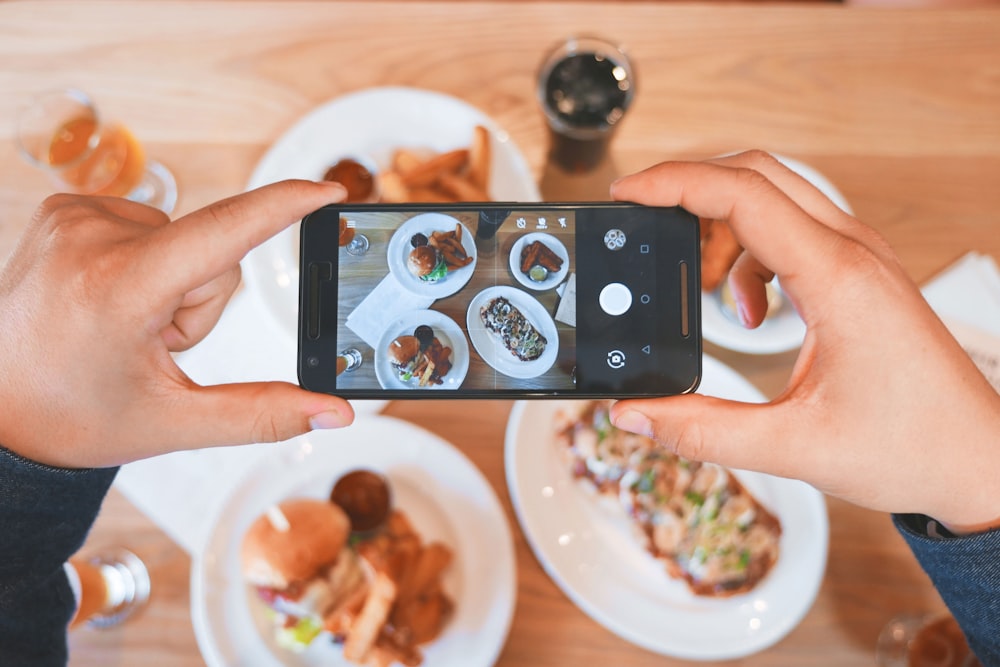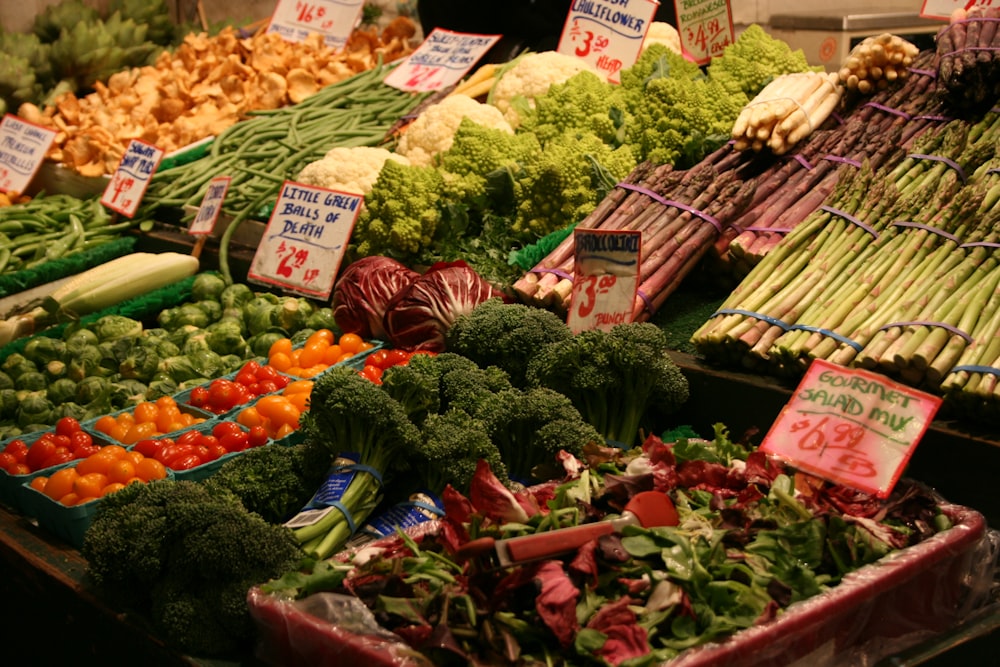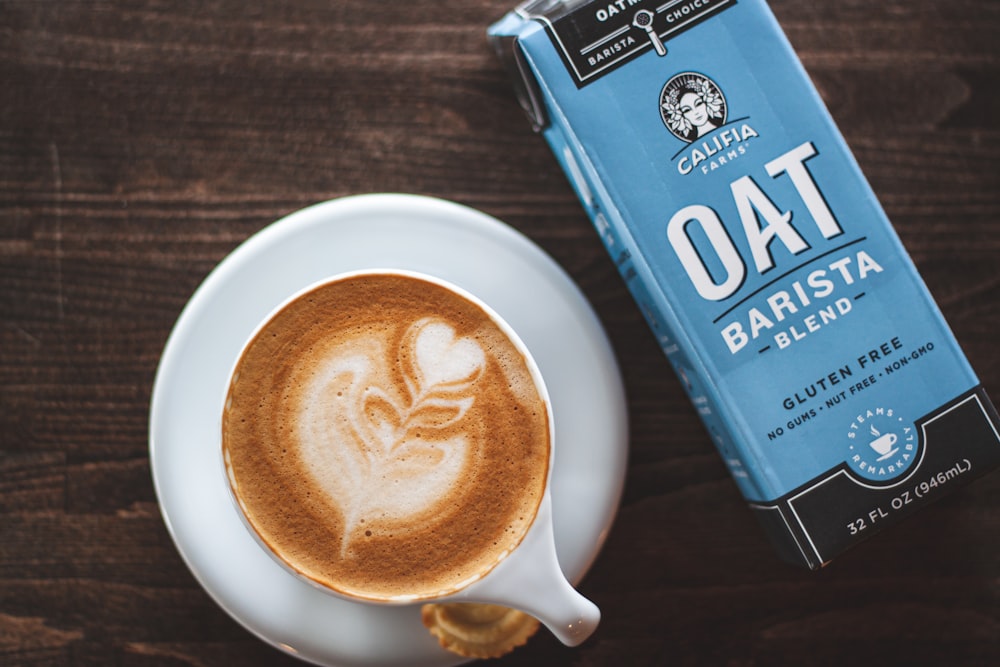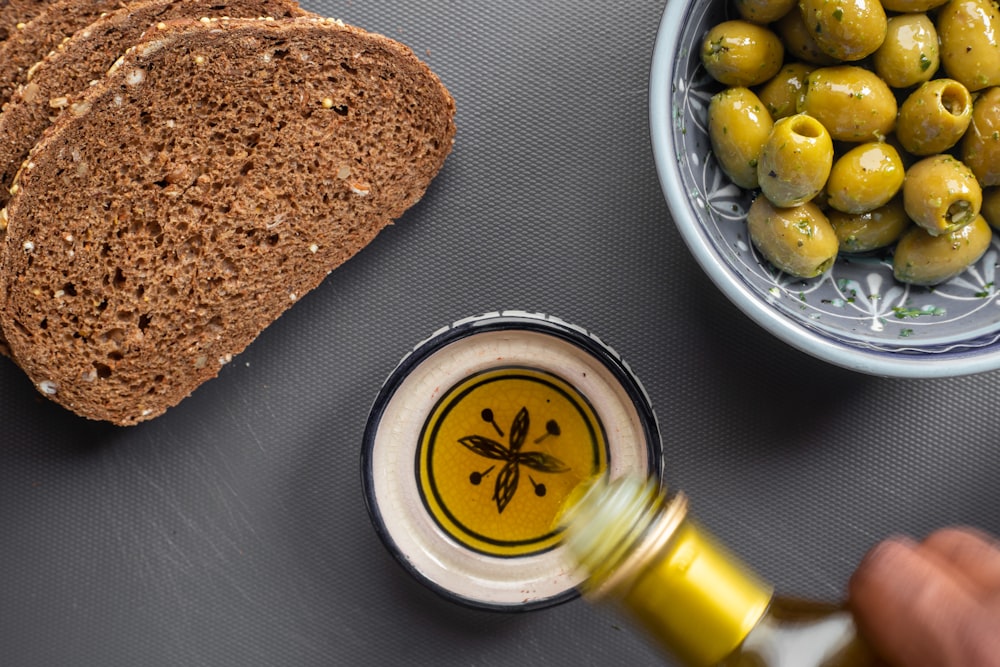Who Decides What’s for Dinner?
Clean Eating: Is it sustainable?
Hibah Butt
Social media Is Changing Our Diets
As a college student who is always busy with school work, hobbies, and recruiting, cooking and eating nutritious foods has been something I have had to sacrifice. When it comes to looking for helpful and nutritious meals to cook, social media and YouTube are always there as a resource. There are millions of recipes you can go through to search for helpful meals for busy days. Unfortunately, scrolling through social media has become more exhausting than enjoyable. For the everyday social media consumer, it is nothing rare to see popular influencers on the main pages of social media apps.

They are always advertising a product, whether it be clothes, electronics, and most recently food items, particularly well known healthy foods. Whether it is low carb breads, plant based meats, or even vegan dairy products, influencers have been able to turn their lives into a marketing deal to gain followers. Foods that are shown on social media have gained the reputation of being nutritious, when often times they are not. Social media and the rise of the “influencer” has blinded consumers into demonizing some foods as healthy and others as unhealthy. This narrative actively harms consumers because it is often times too expensive to purchase healthier foods. Consumers tend to follow the advice of what is trending on the internet rather than health professionals who are trained to help people take care of themselves.
I am not a social media hater, spending time on social media is my favorite way to pass time. If someone is actively trying to make positive changes about their health, social media is a great place to connect with people from all different backgrounds who are very encouraging and supportive. Even though this could be the case, many times the line between a healthy consumption of social media and it ultimately becoming very harmful is paper thin. Social media has become a perfect marketing tool for companies to sell their products through the ideal influencer. Food influencer Francesca, also known as “plantifullybased” on Instagram, shares food recipes with many dairy free and vegan products including Silk’s dairy free heavy cream and Dr Praegers’ plant based burgers. When posting her recipes online, she very cleary shares that these items are the healthier and more nutritious than dairy heavy cream and real meat. Another example comes from food influencer Caitlin Greene, known as “starinfinitefood” on Instagram, has a partnership with Biene Snacks who are famous for their chickpea products, which she advertises as “healthier than potato chips”. Many consumers trust an influencer more than health professionals, advertisements, and even celebrity endorsements when making decisions about what foods are good for our health.
Clean Eating & The Ideal Life
The lives that influencers live are the perfect examples of the ideal life, especially when influencers are usually celebrities, athletes, models, or just regular people with a lot of money. According to an article titled “How Social Media Feeds Diet Culture” written by Amy Tippins on Body Symmetry M.D., staying clear from believing what social media influencers say about nutritious and non-nutritious foods could be the best thing a person does for themselves. A study conducted by researchers at the University of Glasgow found that only 1 in 10 influencers actively provide accurate information when it comes to food. “Only 1 in 10 influencers actively provide accurate information when it comes to food.” — Amy TippinsIt was conducted after researchers wanted to see if the claims made by influencers were transparent, trustworthy, and had evidence to back up their arguments (Tippins, 2020). Social media influencers have more information about certain foods than the average consumer, usually because they are given information for marketing purposes. It is actively harmful because it inherently misinfors consumers about something as important as their health.

A consequence that has become prevalent in the past decade more than ever before is the concept of clean eating, which has actually demonized many foods in our society. Foods with fat, carbohydrates, sugar, and processed foods in general are completely blacklisted by influencers. Additionally, this has led to a rise of gluten-free products, dairy-free foods, and organic and natural foods. Don’t misunderstand, clean eating is a great idea because it promotes less processed and fatty foods. Unfortunately it has become an obsession for many and has resulted in a brand new eating disorder known as Orthorexia. Orthorexia is defined as an eating disorder with “an obsession with health, wellness, and clean eating, which usually involves food and nutrient restriction” (Tippins, 2020). Orthorexia forces one to base their self esteem on their eating habits and makes one increasingly critical and rigid. The idea of clean eating emphasized by social media is a direct result of western cultural influences and its fixation on healthy eating habits.
It is no lie that there are foods which are better for your body. Some foods include higher nutrients and do their job of providing your body and mind with the energy you need to function. Everyone needs a healthy balance of what you should and should not consume. Unfortunately it has become difficult to have a healthy balance when food is consumed and produced at an unprecedented rate. The documentary Food, Inc. directed by American filmmaker Robert Kenner examines corporate farming in the United States, focusing on how agriculture produces food that is harmful to the environment and to animals. Even though it has been 12 years since the documentary was released, Food, Inc. proves that choosing to consume food which is healthy is difficult in our society because of the production itself. Additionally, it is important to understand that the food marketing side of social media is how profits are made from selling cheap food to people from all backgrounds. These populations primarily include young women and men who are the target audiences on social media apps across the globe. Eating foods that are good for our health has become the new trend, but foods that claim to be better for you do not always deliver what they promise.

There are a couple of foods that come to mind when I think about diet culture and fad foods which are constantly showing up on my social media pages. Supermarket shelves are stocked with dairy free products and milk options, which include milk, yogurt, and cream made from oats, soy, almonds, coconuts, peas, rice, hemp, and many other different nuts and plants. As an avid fan of oat milk and a skeptic of the dairy industry, I do think that milk alternatives are perfect for people who are lactose intolerant, vegan, or even are just skeptical about the dairy industry like myself. My skepticism comes from fact that the dairy industry is harmful to animals, people, and the environment. Animals might not be killed in the dairy industry, but they do suffer a life of misery and cruelty. Even though said dairy products are dairy free, are they necessarily healthier than dairy products? According to an article published on NextAvenue titled “Milk Alternatives: Are They Really Better for You, or Is It Hype?” written by registered dietitian Maureen Callahan, dairy free products have low levels of artery-clogging saturated fats and zero cholesterol. It all sounds appealing, but the con to many dairy alternatives are that they are very high in sugars and protein. Dairy free products should not be advertized as extremely nutritious when to a lot of people they could be very damaging.
“Women should limit their intake of sugar to 6 teaspoons a day and men 9 teaspoons a day, and vegan dairy consumers often pass this limit by consuming about 17 teaspoons a day on average.” — The American Heart Association The American Heart Association recommends that women limit their intake of sugar to 6 teaspoons a day and men 9 teaspoons a day, and vegan dairy consumers often pass this limit by consuming about 17 teaspoons a day on average. (Callahan, 2012). Even though dairy free products are not as nutritious as some people say, there are genuinely some products on the market that are quite nutritious and are better options for people who choose to be conscious about their health.
In the past few decades, our society has seen a rise in low carbohydrate diets and there have been many claims about how carbohydrates are the devil in disguise. There are some people who struggle with insulin resistance and cannot afford to consume carbohydrates every day, there are options available for them. A product that has been popularized on social media is ezekiel bread. Kris Gunnars wrote an article titled “Why Ezekiel Bread Is the Healthiest Bread You Can Eat” published on Healthline, and said that ezekiel bread is much richer in nutrients and fiber.

They are all organically grown and allowed to sprout before being processed and mixed together for baking. The sprouting process is what changes the nutrient composition of the grains significantly because it is higher in protein, lower in carbs and gluten, and has a lower glycemic index compared to regular breads (Gunnars, 2018). This type of bread is sprouted and is made from a variety of whole grains and legumes, and is one of the very few breads that does not contain added sugars. Ezekiel bread is a great alternative for people who are unable to enjoy regular bread everyday, but there is one thing that is being ignored when it comes to low carbohydrate and dairy free products, and that is the price.
It’s All About The Money
After conducting some research at local grocery stores including Kroger, Fresh Thyme, and Walmart, I was able to thoroughly understand that the so called healthier foods that are promoted on social media are definitely for the wealthy. Living in an area that is predominately wealthier than the average city in the United States, I am able to purchase a lot more healthier, organic, natural foods that would not be available for people in lower income areas. Dairy free products are about $3.00-$4.00 more expensive than products that have dairy in them, and ezekiel bread is also $3.00-$4.00 more expensive than regular bread made from flour. When shopping at grocery stores, I noticed the average cost of bread is $2.50, and ezekiel bread costs $5.25, and oat milk specifically is 2.5 times more expensive than cow milk coming in at $5.29 for half a gallon. One must have the disposable income to spend money on foods that are advertized as nutritious, and these are the so called nutritious products that are advertized by influencers.
Essentially, in order to eat healthy in our society you have to be financially stable and have that extra income. According to research done by the Harvard School of Public Health, the healthiest diet costs about $1.50 extra per day than the least healthiest diets. One of the researchers on the project, Dariush Mozaffarian, said that “$1.50 a day more for eating a nutritious diet would increase food costs for one person by about $550 per year. This would represent a real burden for some families” (Mozaffarian, 2014). “$1.50 a day more for eating a nutritious diet would increase food costs for one person by about $550 per year. This would represent a real burden for some families.” — Dariush Mozaffarian The research proves that often times the average consumer does not have the money to pay for the nutritious foods that are advertized as the one thing people need in order to eat a healthy diet. The problem here is not that nutritious foods that are organic, natural, or free of dairy or gluten are expensive, it is that consumers believe that nutritious foods are the only way to succeed maximum health. In fact it makes sense that these foods are more expensive because often times it takes more money and labor to produce them. One thing to keep in mind is that social media influencers do in fact tend to have this disposable income to spend on more expensive foods, just from the jobs and lives they live. It is easy for them to eat and advertize these healthy foods, but it is unfair to advertize these products as foods that are necessary to be healthy when not everyone has this disposable income to spend on expensive foods. Normalizing eating all foods in moderation and exercising your body and mind needs to be at the forefront of our healthcare initiatives.
The concept of eating in moderation and working out to exercise our body and mind has completely been thrown out the window. Seeking help from doctors who have studied for years to help us be healthy is uncommon, people prefer to take the advice of influencers rather than medical professionals. The foods that are advertized to us as being healthy and beneficial for our bodies might not even be what we actually need. Everyone is built differently so we cannot take such subjective advice from social media when choosing what we need to take care of ourselves. We as consumers need to actively take a break from social media and taking the advice of influencers, and learn to listen to our bodies before we allow other people to make decisions for us. Instead of listening to influencers about what is good for our bodies, we should be listening to licensed professionals like doctors, dietitians, and nutritionists who could provide us with the best advice on living a healthy life.
References
Callahan, M. (2012, May 15). Milk Alternatives: Are They Really Better for You, or Is It Hype? Retrieved November 4, 2020, from https://www.nextavenue.org/milk-alternatives-are-they-really-better-you-or-it-hype/
Gunnars, K. (2018, May 22). Why Ezekiel Bread Is the Healthiest Bread You Can Eat. Retrieved November 4, 2020, from https://www.healthline.com/nutrition/ezekiel-bread
Kenner, R. (Director), & Kenner, R., Pearce, R., Schlosser, E., Robledo, M., Pohlad, W., Skoll, J., . . . Adler, M. (Writers). (2008). Food, Inc. [Motion picture]. United States: Participant Media.
Rao, M., Afshin, A., Singh, G., & Mozaffarian, D. (2014, January 13). Eating healthy vs. unhealthy diet costs about $1.50 more per day. Retrieved November 21, 2020, from https://www.hsph.harvard.edu/news/press-releases/healthy-vs-unhealthy-diet-costs-1-50-more/
Tippins, A. (2020, February 11). How Social Media Feeds Diet Culture. Retrieved November 4, 2020, from https://www.bodysymmetrymd.com/how-social-media-feeds-diet-culture/
